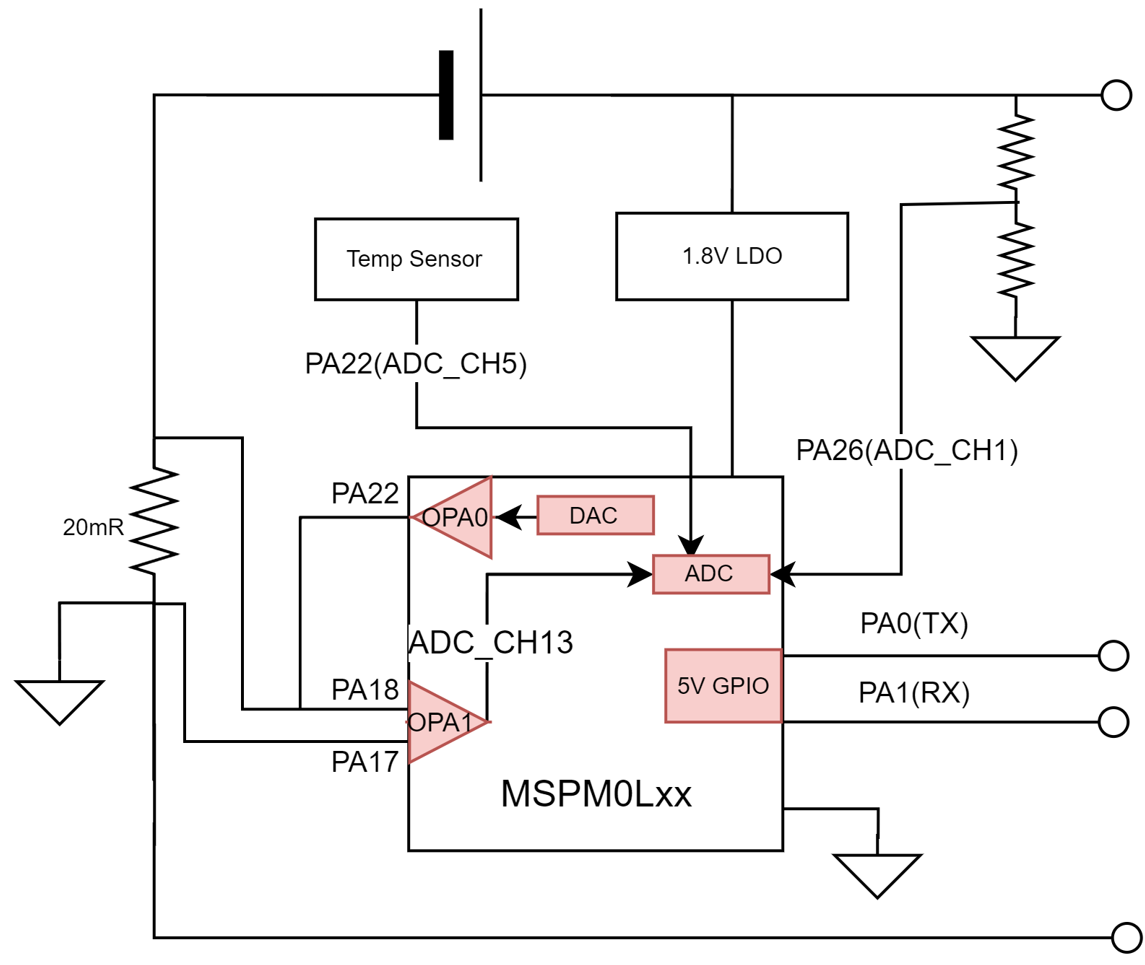SLAAEE6 October 2023 MSPM0L1306 , MSPM0L1306
2 Hardware Introduction
Figure 2-1 is a hardware high-level block diagram, showing all the used pins by this demo. The solution demonstrates testing the current at ADC channel 13, the temperature at ADC channel5 and voltage at ADC channel1.
 Figure 2-1 MSPM0 Gauge Board Block
Diagram
Figure 2-1 MSPM0 Gauge Board Block
DiagramThis design can use these MSPM0 features:
- High precision 12-bit ADC for temperature, current and voltage detection.
- Integrated high precision chopper OPAs for current detection.
- 5 V tolerant open-drain I/O with UART or I2C function to communicate with masters under different power rails.
- Lower to 1.62 V working voltage to support single battery full voltage range.
- Lower to 1.1 µA STANDBY current with SRAM retention for battery application,
Here, a quick introduction for the hardware board is provided and how to use it. For the battery, you can insert it into the default socket or connect it to the backup battery supply input. Debug and UART COM port is used to connect to PC, which can download the code or communicate with the GUI.
 Figure 2-2 Gauge Board
Instructions
Figure 2-2 Gauge Board
Instructions